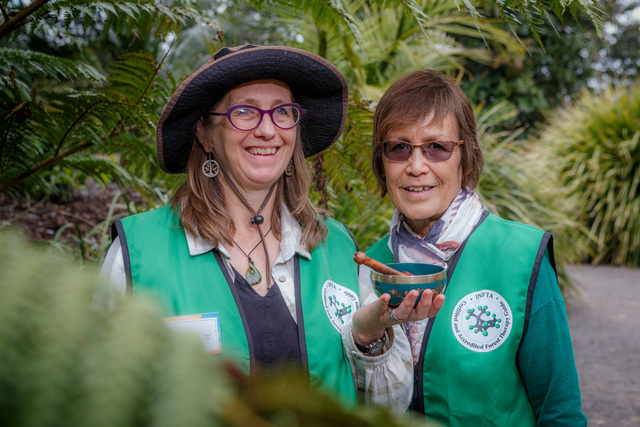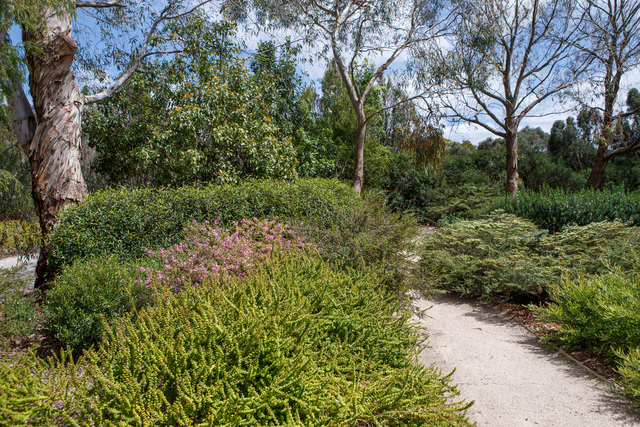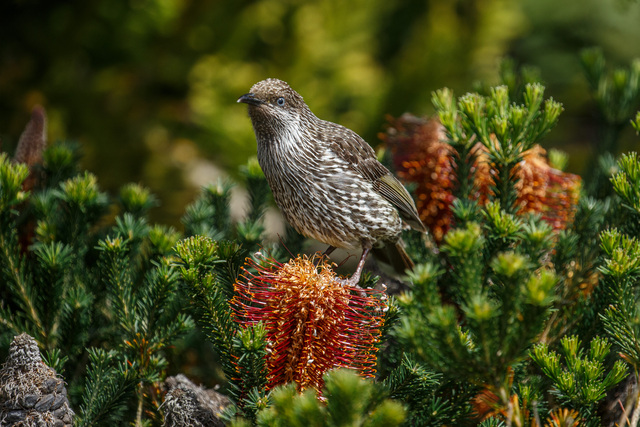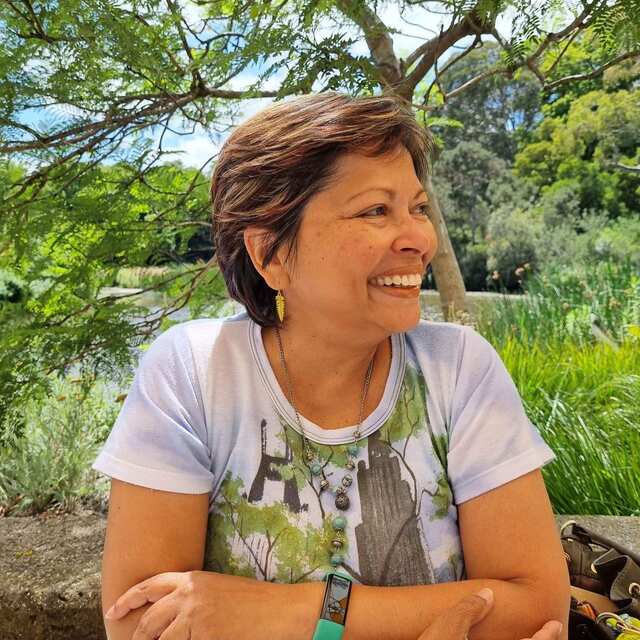When spring unfolds, forest therapy guides Carolyn Shurey and Evelyn Lavelle will take a group traversing the Royal Botanic Gardens Cranbourne on a therapeutic mission.
They lead participants into different sensory activities, feeling the breeze, looking at the shapes of blues, hugging the trees, and smelling a variety of peppermint. This guided experience aims to bolster both mental and physical health by reducing stress levels, regulating pulse and blood pressure and elevating the mood.
Forest Therapy has been running at the Royal Botanic Gardens since 2019, and a growing interest has been observed in the community over the years.
“We introduced the program at Melbourne Gardens in 2019. And then in Cranbourne, we started before Covid. We lost a few years there, so it’s come back again, and we have it in autumn and spring,” creative producer at Royal Botanic Gardens Victoria Kara Ward said.
“We think this is a really beautiful experience. We like to remind people that being in nature is good for your relaxation and mindfulness.
“And we just think it is a great way to celebrate the gardens and to also promote slowing down and mindfulness and the benefits of being in nature.
“At the same time, we think it’s also a really beautiful way to experience the garden because you were taught to slow down and look closely, you then notice lots of beautiful detail about the garden.”
The program is presented in partnership with the International Nature and Forest Therapy Alliance (INFTA).
INFTA president Susan Joachim said the practice of forest therapy was inspired by the Japanese practice of shinrin-yoku, which was translated to forest bathing.
“It has nothing to do with water, but more about immersing our senses in nature,” she said.
“It started in the 1980s as a practice in Japan in response to chronic stress in the public service and the corporate world. There was a lot of stress among people, and there were high rates of suicide among executives because of the long working hours.”
“In response to that, the government decided to open up forest therapy centres, and this spread out to other countries like South Korea, and now it’s spread all the way to Australia.”
Ms Joachim said the walks at the Royal Botanic Gardens were all about slowing down.
“It’s designed to help people who get out of their car and come into the gardens to begin to relax their bodies. We do stretch. We do movement activities to help the body slow down,” she said.
“We start with the body relaxing, and then the mind follows. We close our eyes, and the guides would take us through listening, smelling and feeling the textures of the wind.”
Unlike the original practices in the forests in Japan, the Australian practices have gone through localisation.
“Japan has very mountainous forests, so the experience is much more like a hike. Whereas in our parts of the world, we brought more elements of mindfulness into the practice,” Ms Joachim said.
“It is also in tune with the local culture, with local Aboriginal cultures and also in response to the different vegetation in Australia.
“The Japanese couldn’t believe that we have these programs in botanic gardens because, in Japan, they think forest therapy must only happen in a forest. But we showed them we can.
“Forest therapy does not only have to be in the forest. If there’s a botanic garden that has that biodiversity and that has strength, it surely can bring good mental and physical health care.”
To know more about Forest Therapy in Royal Botanic Gardens Cranbourne, visit: rbg.vic.gov.au/cranbourne-gardens/whats-on-cranbourne/forest-therapy
If you need help, contact Lifeline on 13 11 14 or, in an emergency, 000.










